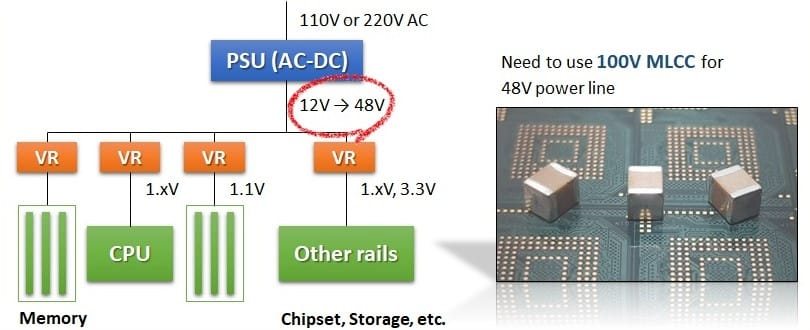Technology supports the increasingly important role of the power engineer
As Nexperia receives an impressive 5* rating for engineers for the second edition of its popular FET applications manual, Chris Boyce, director of the company's product group, considers the growing importance of these semiconductors and power engineers who they know how to use them.
Modern society faces an unprecedented energy challenge. On the one hand, we must meet the demands of a growing population and the inexorable increase in the number of applications that require electricity. On the other, there is the imperative to avoid a climate emergency by reducing greenhouse gas emissions and dependence on fossil fuels. Energy design engineers have a critical role in addressing these challenges, finding ways to increase product performance and functionality while limiting energy resources. And one of the ways they can do this is by optimizing efficiency through the judicious selection and implementation of the right FET technology.
Energy management moves up the design agenda
Today there are hardly any applications where energy efficiency is not near or at the top of the design agenda. In the case of IoT devices, for example, careful management of energy resources can allow the incorporation of some element of data processing in remote nodes. In mobile and consumer products, where user experience is everything, efficiency means longer time between charges or battery replacements. A similar issue affects electric vehicle designers, who are looking for solutions that remove range anxiety, one of the main barriers to purchase. Not to mention the fact that the proliferation of electronics for safety, comfort and infotainment and the shift to autonomous and connected vehicles require more electronics than ever before.
For data centers, the economic and environmental benefits of even the slightest reduction in power use across millions of computers make efficiency a key objective in server design. And with kilowatt output from motor drives becoming commonplace, efficient use of energy has become the cornerstone of efficient and precise factory automation motion control. The minimization of the use of energy also plays an important role in the latest developments in communications. The deployment of 5G, in particular, will generate a great demand for infrastructure based on high-density, ultra-efficient and ultra-reliable communications equipment.
With efficient energy management at the top of the design agenda, the importance of the power engineer is very high. In addition, other engineers who have not received power guidance until now find themselves having to expand their knowledge of power design. This, in turn, requires a thorough understanding of the components that switch, convert, and manage power. This makes knowing how to evaluate, compare, select and use FET technologies an essential skill.
design challenges
The first hurdle is narrowing down the search to the devices most likely to meet the app's requirements and comparing them like-for-like. With some 20.000 different FETs on the market, this is not as easy as it sounds. A second hurdle is that the conditions for which specifications are given in data sheets vary significantly between vendors. Therefore, being able to interpret data sheets from different manufacturers in the context of the requirements of a given application is a critical skill for the product selection engineer.
Once the list of components has been identified, it will be necessary to carefully evaluate the effects of factors such as switching, conduction and avalanche losses. Additionally, EMC design considerations call for techniques to reduce switching noise, especially in high-speed applications.
Designing for safety and reliability is important, and in many cases, especially where space is limited, effective heat management is a challenge that must be considered from the outset. In addition to understanding thermal behavior and packaging implications, it is necessary to assess the impact of the printed circuit board on heat dissipation. Simulations using RC thermal models, for example, sometimes offer a quick and inexpensive way to infer the thermal performance of power MOSFETs using an electrical analogy.
When it comes to applications that require small signal MOSFETs, leakage current will be an important consideration. This is especially true for mobile electronics, such as smartphones, tablets, wearables, or portable medical equipment, where out-of-state current leakage will influence standby or sleep time.
Finally, there are other factors that engineers who are familiar with silicon MOSFETs but are now working with devices built with new materials such as gallium nitride (GaN) must consider. In GaN-based faster switching designs, for example, minimizing parasitic inductance through optimized PCB design can be critical. In addition, special care must be taken when using oscilloscopes to measure superfast switching waveforms.
FET evolution
Of course, the concept of FETs is not new. In fact, the Polish-American physicist Julius E. Lilienfeld filed a patent for the first field-effect transistor almost 100 years ago. Even the superjunction FET has been around since 1984. Clearly things have come a long way (particularly when it comes to switching speeds), but as a mature technology we have already enjoyed many "easy wins" in regarding the efficiency and downsizing potential of general purpose devices. This is why it is moving to Application Specific FETs or ASFETs.
ASFETs often trade off one parameter with another so that designers can choose the device that best meets the specific requirements of the target system. For example, switching power supply designers will seek a balance between dynamic switching parameters for maximum efficiency and low on-resistance for high load conditions. In contrast, motor control engineers, where switching frequencies are typically an order of magnitude lower, are more concerned with current peaks and locked-rotor thermal performance, as well as management. from EMI effects. And those working on hot-swap, soft-start, and live-insertion applications will pay primary attention to the safe operating area (SOA) of FETs. At the other end of the power scale are low current MOSFETs found in applications such as DC-DC conversion, load switching, and level shifting. Combining high-speed operation with advanced packaging techniques has enabled manufacturers to develop devices specifically designed to optimize performance while meeting miniaturization and power density requirements. Such a diverse range of applications is testament to the success and versatility of FET technology, but it is clear that the days of generic devices and a 'one size fits all' approach are long gone.
The evolution of FETs also means the availability of new options made with broadband materials (WBG) such as gallium nitride. Already highly successful in the field of RF power, these technologies are becoming commercially viable in other demanding power applications in the computing, industrial and telecommunications sectors. Here, their combination of ultra-low high-voltage on-resistance, excellent switching figures of merit, thermal stability, and high-frequency operation makes them ideal for AC-DC conversion, DC-DC conversion, power factor correction (PFC) and other high-power, high-density, ultra-speed switching applications. In addition, GaN is becoming the gold standard for delivering the performance and efficiency demanded by the automotive industry for on-board charging, DC-DC conversion, and traction inverter designs in electric vehicles.
engineer support
So what support is there for an engineer who, willingly or unwillingly, finds himself tasked with deploying power MOSFETs, small-signal MOSFETs, or GaN FETs? The good news is that with online design tools, FAEs, quick-learn videos, comprehensive selection guides, and in-depth application notes, engineers have access to more resources than ever to help them select and design with FETs. Added to these resources is the latest edition of Nexperia's GaN FET and MOSFET Application Manual. This design guide brings together reference materials related to the use of GaN MOSFETs and FETs in real-world systems, based on the experience that Nexperia's engineering teams have accumulated over many years.
The Nexperia GaN MOSFETs and FETs Application Manual can be downloaded or ordered in paper format at: https://efficiencywins.nexperia.com/efficient-products/mosfet-and-gan-fet-application-handbook.html








